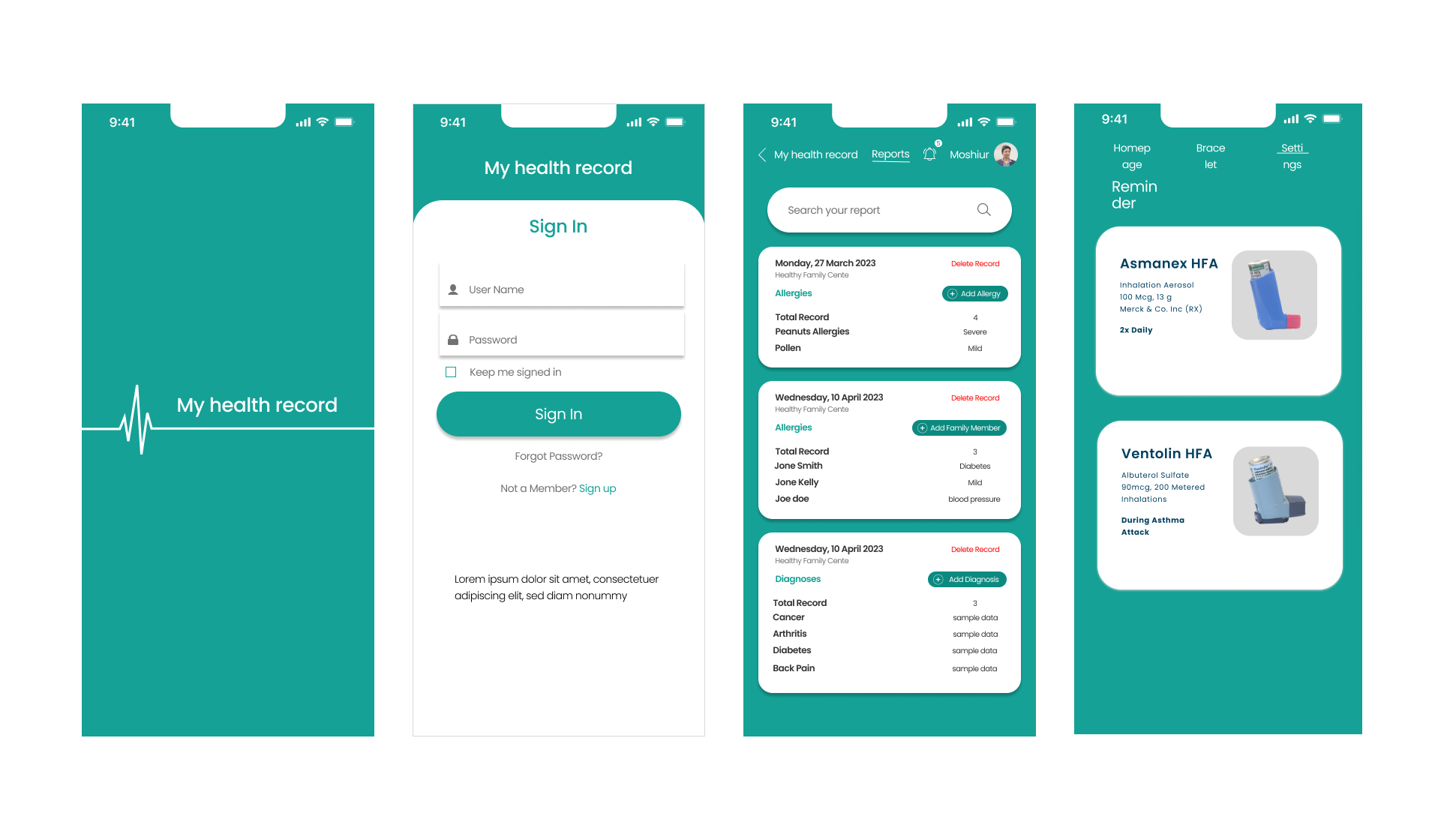Background
AsthmaSense is a system designed to cater to the day-to-day challenges asthma patients face with their diagnosis. The system includes a wearable component for asthma-related therapy tracking, an application that allows users to track the usage status of their prescription medication, create reminders to ensure they follow their regimen, place orders for medication that the application indicates is running low, and monitor the data indexed from the wearable wrist watch. The goal is to alleviate stress surrounding their regimen routine and reduce feelings of negativity surrounding the use of an inhaler, which can stem from social stigmas.
Client
Class Project - Design for Behavior and Experience in Healthcare
Team
Tara Farzin
Yi Ting Chen
Xinyi Zhang
Date
Feb 2024 -
Mar 2024
Tools
Figma
FigJam
Adobe Photoshop












